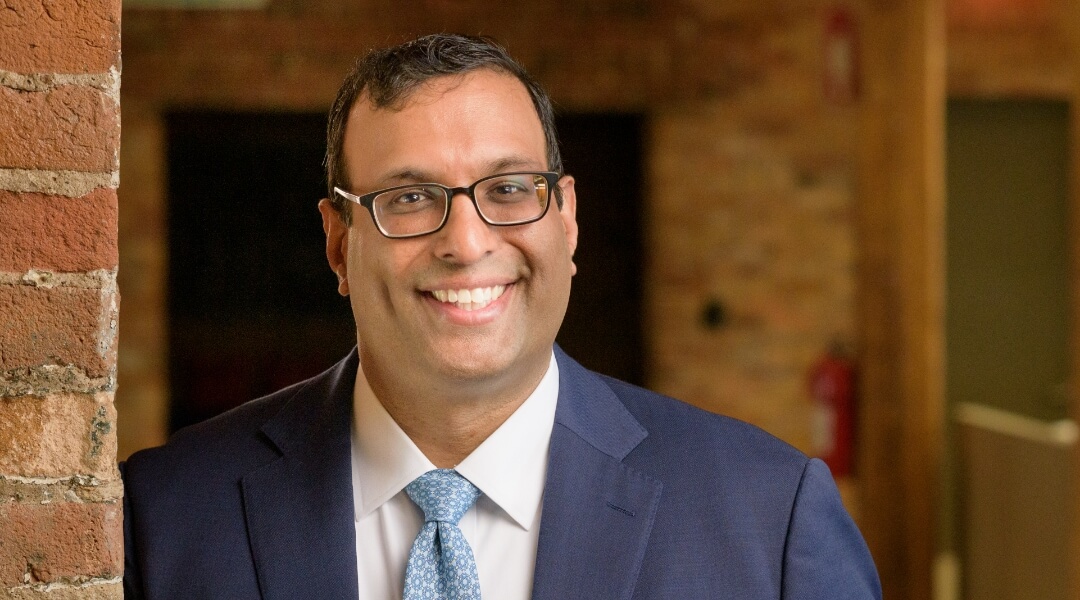A common strategy tool for analyzing the outside world can be applied inside an organization too.
Over recent decades, futures thinking has caught the attention of leaders, strategists, and academics alike. It is increasingly used by senior executives as part of their toolkit for thinking about business strategy in a world that seems ever more VUCA and BANI – that is, volatile, uncertain, complex and ambiguous, and brittle, anxious, non-linear and incomprehensible.
Futures thinking is both a methodology and a mindset for exploring different options and opportunities in order to shape the future. It is a powerful approach that has become common for strategy development, yet there is an area where it is less commonly applied: inside the organization. Here’s how futures thinking can help leaders shape transformations and change management.
What is futures thinking?
Simply put, futures thinking is quite literally thinking about the futures – plural. We use futures thinking every time we imagine what we might have for dinner, who we could visit at the weekend, or where to go on vacation. In an organizational setting, futures thinking is the creative and investigative process of exploring and evaluating what affects us, to describe scenarios for the futures of our organization.
The idea of multiple futures was used increasingly in strategic thinking in the middle of the 20th century. It marked a shift away from a belief in the possibility of predicting the single, optimal, positive future, to embrace the worlds of open possibilities, chaos and complexity. In the 1960s and 1970s in particular, researchers and futurists initiated a methodical effort to characterize the typology of the evolving futures approaches, and to better understand how we anticipate and form assumptions.
During the following decades, a robust and replicable approach and toolbox was developed, supporting organizations in scanning the globe and their industry for trends, exploring possible scenarios, and initiating strategic programs in response.
This approach is massively valuable when expanded and slid horizontally into transformational work. This means reshaping the methodology, approach and toolbox – shifting the focus from strategic foresight to the inside of the organization, thereby supporting transformations and change management efforts. It is a powerful way of thinking about the futures of an organization’s structures, culture and governance.
Why futures thinking is so relevant
Over the past few years, I have had hundreds of conversations with top and middle managers, all of whom are striving to navigate varied uncertainties and changes in their business world. Three patterns emerge. First, leaders need to transform their organizations in order to adapt to the changing ecosystems around them, in society and technology, externally and internally. At the same time, there is a need for increased change-readiness.
Second, there is a lack of certainty about how to move ahead. The familiar, by-the-book answers are increasingly insufficient, or need a twist to fit the context or solve the problem at hand.
Thirdly, more and more of these leaders were using phrases like “I think,” “I feel” and “I sense.” Their language hints at an emerging style that is not solely based on transactional behavior, and is oriented towards seemingly emotional and intuition-based capabilities.
Confronted by the challenges of a VUCA and BANI-feeling world, several of these leaders turned to futures thinking to explore and evaluate the trends affecting them, and to imagine plausible and preferable futures for their organization.
What they seek is a way to listen to the trends and movements around them, in order to change the way that collaboration, culture and decision-making happen. They want work to be relevant to their people – including leaders, thinkers, and doers in the organization – and to other internal stakeholders. They realize that they should tap into the collective intelligence of the organization and sense – and sense-make – with their people.
The days of the participatory organization are coming; the decisions that shape its trajectory will be shared and co-created. As that emerges, progressive leaders turn to futures thinking to listen for internal and external trends and signals; to explore and evaluate trends and scenarios; to tell stories about those plausible and preferable futures; and to co-create roadmaps that set out the way ahead.
Applying futures thinking inside an organization
Futures thinking is often used in a business setting as a vehicle for putting external trends into the context of the organization in a structured manner – be they trends in work, food, play, AI, teaching, HR, or any other domain. It is typically applied as an alternative or a supplement to strategic planning, in transformation projects, or in change management projects.
In the Danish IT consultancy Pingala A/S, futures thinking has been used several times over the past decade to imagine growth. “How can we successfully scale from 10 to 100 employees and stay true to the original idea of a company we would want to work in for the rest of our professional careers, with a flat organization and no managers?” the CEO Kent Højlund asked himself and the organization. As the organization grew, the questions evolved. “Well, how about 1,000 employees? And how do we develop ourselves with the development in technology and business around us?”
To do this, the company has used the approach and toolbox from futures thinking to scan for trends, evaluate them, explore scenarios, discuss
the emotional response, and calculate backwards from those futures to establish roadmaps and actions. In turn, this lead to cultural projects, structural enhancements, updates in the governance, new business models, and personal capability building.
Similarly, in the Danish diabetes healthcare center Steno Diabetes Center Copenhagen, futures thinking has been used to reimagine the future of patient care. The Center’s leadership team and board of directors tasked a project group with exploring how to rethink and rebuild patient care for the future. The question the project group asked itself was far-reaching: “How do you reimagine patient care, while taking trends in healthcare, society, leadership, work and technology into consideration?”
The results included the ‘Steno Life’ program, which was initiated to establish an individualized, digitally assisted, needs driven, modern outpatient center for diabetes. Over half a year, more than 130 nurses, lab technicians, doctors, clinicians, biomedical laboratory scientists and other personnel with direct patient contact were engaged in futures thinking workshops, exploring the trends in healthcare, technology, wearables, AI, and demographics. This led to a roadmap for the future solution, version one of Steno Life.
Other effective examples include the use of futures thinking for imagining and designing a progressive, self-governed tribe of scientists, lab technicians, bioinformatics experts and IT specialists inside an otherwise highly structured life science corporation. It has been used effectively for scenario planning in life sciences, leading to discussions of organizational design, cultural readiness, and personal capability building. And it has also been used to explore trends in a state-owned company that operates and develops electricity and gas transmission systems, enabling project managers and change makers to understand the plausible and preferable consequences of
said trends.
In every case, the intentions are the same: to explore and evaluate the possible, plausible and preferable futures; to make informed decisions on what to do, today; to engage people (leaders and doers) in shaping their future; to increase the skills of the leaders, thinkers, and doers; and to establish ‘futures literacy’ as an organizational capability.
Where do I start?
In general, getting started with futures thinking takes just three things: a curious, playful mind, a list of trends, and a structured approach and tools for running workshops.
Start by grabbing one of the many reports on trends from the top management consultancies. Look at the trends that are relevant to your industry or your function. Now, ask yourself these questions for each of the trends. What is the likelihood that this trend will affect us, say within three years? 0%? 50%? 100%? And what is the likability of the effects of this trend? Do you like it, or hate it?
Then explore different scenarios for what might happen – both bad and good. Start with the bad ones. Discuss the emotions that arise in each of those scenarios.
Leaders can also build the right mindset for futures thinking by exposing themselves to as many inputs as possible. Educate yourself. Read, listen and watch. Pay attention to trends and signals in the news, social media, newsletters, online forums and other outlets. Beyond that, I suggest taking courses to learn from experts and meet like-minded futurists. I recommend coursework offered by the Copenhagen Institute for Futures Thinking, and the online Futures Thinking Specialization course on Coursera, created by the Institute for the Future and Jane McGonigal.
Teaming up with others is also hugely valuable. Surround yourself with other futurists. Futures thinking is a team sport: you will benefit immensely from other people’s points of view and opinions, and their expressions of what’s desirable.
What do leaders need to apply futures thinking?
The leadership needed for embracing and applying futures thinking is different from traditional transactional and executional leadership in several ways.
You need to be able to imagine how trends and signals unfold, and express – at a personal level – the desirability of those signals. You should be able to spot the internal signals and engage with internal ‘trend receivers.’ Picturing yourself in the future requires imagination and storytelling skills. Finally, you need to express the consequences of the scenarios you explore, in terms of changes to the structures, cultures and governance needed in these alternative futures.
Clearly, that calls for fresh skills that go beyond those common to traditional leadership. Four stand out.
Possibilism Believe in human agency, not determinism
Plasticity Believe in adaptation, not rigidity
Playfulness Approach challenges with joy, creativity and spontaneity
Organizational consciousness Be aware of both the existing and emerging cultures in the ecosystem, including subcultural, hidden and rebellious movements.
Reaping the benefits
The output of using futures thinking is two-fold. It produces both concrete, useful artifacts, and emotional experiences. The functional impact is tangible: that is, overviews of trends and their impact, scenarios and futures, roadmaps, and informed decision-making.
All this feeds smoothly into the organization’s strategic, tactical and transformational planning, either as a substitute or supplement. Likewise, the emotional impact is substantial and captured in the phrase ‘Hope for the future’. It represents ownership of the future and the way forward; confidence in the approach; agency to act and shape the future.
I frequently experience emotional reactions during futures thinking processes and projects, because it gives leaders, thinkers and doers a shared language and a useful toolbox. Today’s challenges can seem overwhelming – but there are always options for shaping the future. “Clearly, we learned that we actually could do something about it”, as one participant commented.
Futures thinking nurtures hope and creates engagement. It creates agency – and is an antidote to the difficulties and strains that define today’s business world.



